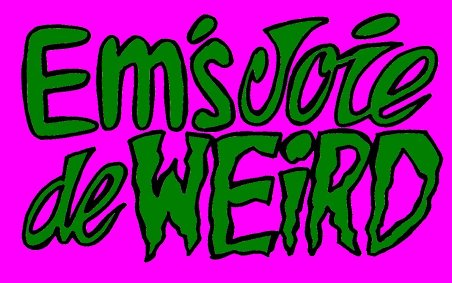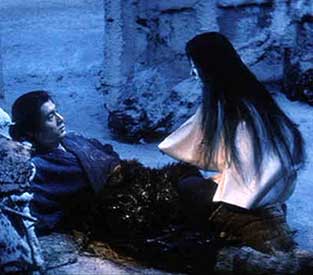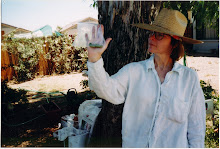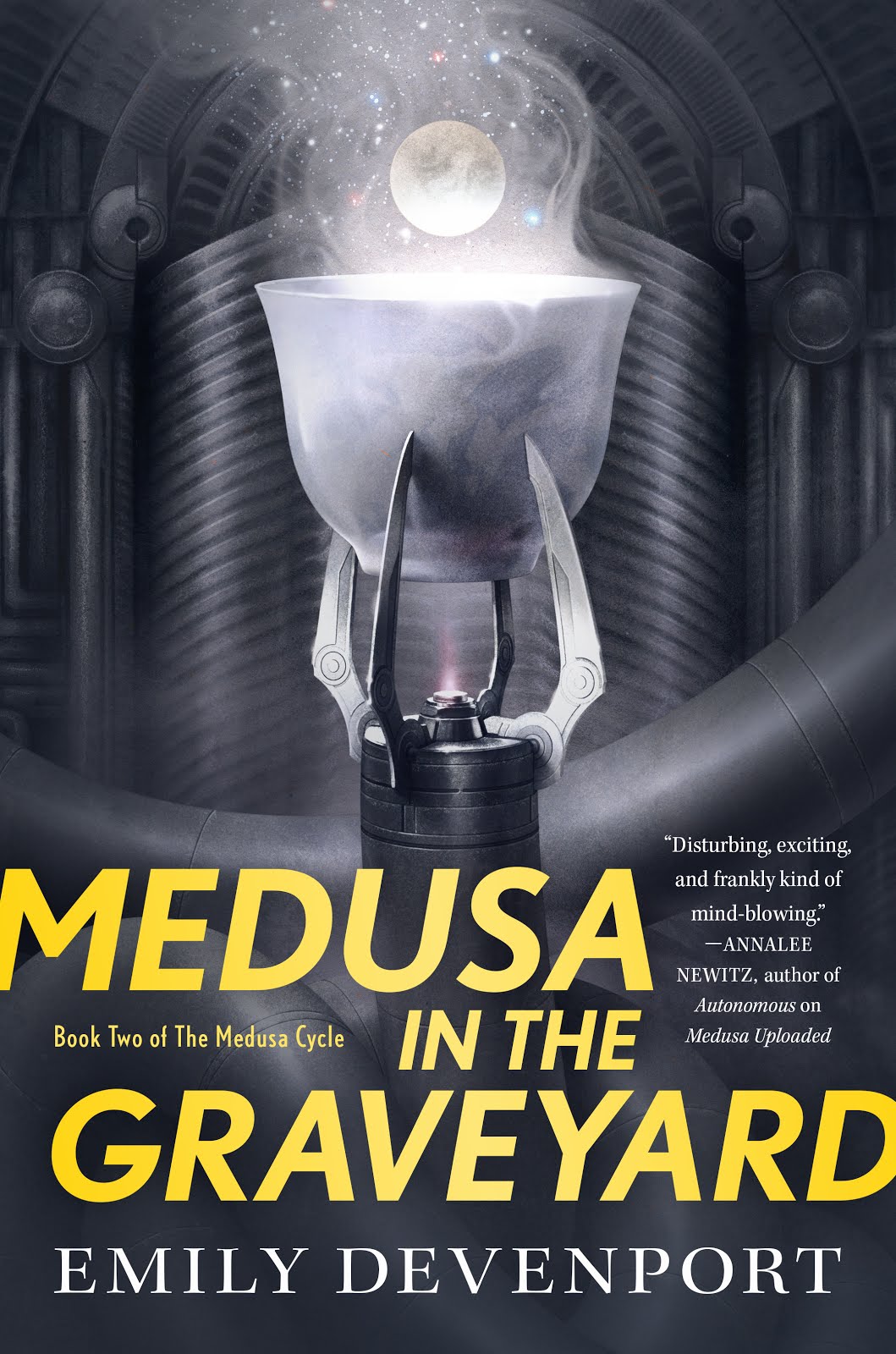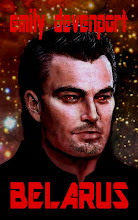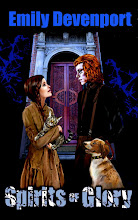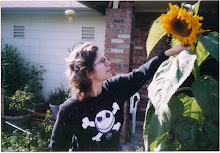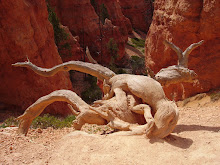But in the end, you cheer for both. Desk Set is not a grand film that forever changed the art form. But it is an irresistible snapshot of a particular time and place, a moment of change in American business and American romance. I watch it at least once every year, so I can take a brief vacation to that time and place. That's why it goes on my list of the best.
Thursday, August 30, 2012
Hal 9000 Was Not the First Computer Heavy In Movie History
Most
people who write a best movies list that includes a movie with
Katherine Hepburn choose something other than Desk Set. They
may prefer Pat & Mike or
Adam's Rib, titles
that are much better known. Almost certainly, they would name The
African Queen, which deserves to
be honored.
In
fact, The African Queen
will be the subject of my next blog entry. And of all the romantic
comedies that Katherine Hepburn and Spencer Tracy made together, Desk Set is my favorite – for one
simple reason. It's a science fiction movie.
No,
it doesn't have ray guns, space ships, or aliens. But it satisfies
one of the most basic criterions of a science fiction plot: it's
about how technology changes the lives of people who use it. In this
case, it's about a civilian application for an early computer, the
EMERAC (probably based on the UNIVAC and the ENIAC). Spencer Tracy
plays the efficiency expert who is adapting the computer for a
business interface, and Katherine Hepburn is the head of the
reference department at a New York Magazine that will try to
integrate the big computer into their operations. Since the computer
processes questions and is supposed to come up with instant answers,
the reference staff is understandably nervous about their jobs.
This
is one of the main conflicts in the story. The employees in the
reference department are all female, and you get a glimpse into the
lives of an earlier generation of working women. The wonderful Joan Blondell is Peg Costello – who, like the other gals in her
department, is single, independent, and older than people probably
expected a working woman to be in those days – old enough to be
married, in other words. They have to be ingenious to make ends
meet, but you get the feeling that none of them have met a man for
whom they would be able or willing to give up their independence –
except, possibly for Hepburn's character, Bunny Watson. She does
have a fella she's serious about: Mike Cutler, played by Gig
Young. But he keeps putting her off until his career takes off,
something it always seems to be on the verge of doing. By the time
the computer shows up, he's starting to take her for granted.
That's
the other conflict in the story. Because Tracy's character, Richard
Sumner, is quite charmed by her. He's fascinated by the way the
women perform their jobs, especially by the way their memories work.
He notices that Bunny uses association as a memory tool. And he
enjoys the quick, witty responses she comes up with when they talk.
I suspect he also notices her trim figure and dazzling smile, but he
is so unassuming and courteous, this is more of a conclusion than an
observation.
Bunny
tries very hard not to like Richard – after all, he's programming
the electronic monster that will make her obsolete. But something
between them just seems to click, and pretty soon the luke-warm
boyfriend begins to notice that he's got competition. Suddenly he's
not so inclined to take her for granted. But will he rally in time?
If
you're familiar with the pattern in Hepburn-Tracy movies, you already
know the answer to that question. But the characters are so likable,
you just can't help getting caught up in their lives. And in the
meantime, the big computer is looming over everybody's job, until the
day when it generates a bunch of pink slips for the reference
department. Neither love nor computerization goes smoothly for
anyone in this film.
But in the end, you cheer for both. Desk Set is not a grand film that forever changed the art form. But it is an irresistible snapshot of a particular time and place, a moment of change in American business and American romance. I watch it at least once every year, so I can take a brief vacation to that time and place. That's why it goes on my list of the best.
Wednesday, August 22, 2012
Shadows Of A Lost World
Many
people would put a movie by Akira Kurosawa on the list of top ten
films, and that choice would be justified. There are quite a few
Japanese filmmakers who have earned a place on that sort of list.
But for me, the first movie that always comes to mind when I think of
great Japanese films is the horror classic, Kwaidan, directed
by Masaki Kobayashi.
Based
on the ghost stories collected by Lafcadio Hearn, Kwaidan
is spooky, gorgeous, and fascinating. It takes its inspiration from
classic Japanese illustrations of ghost stories. The last time I
watched it I realized something amazing – this lavish production
was filmed entirely inside a studio. This includes a segment
depicting sea battles.
The
first segment, “Black Hair,” is not my favorite, but I like it
more every time I see it. I think it depicts the true experience of
a haunting, which is always more psychological in nature. A samurai
is sick of poverty, so he abandons his wife and marries the vain
daughter of a wealthy nobleman. His fortunes immediately improve,
but he can't forget the wife he so callously abandoned. Eventually
this obsession with the past wrecks his new life, and he goes home
again to salvage his old life. But what is waiting there for him? I
love the gorgeous, moody sets in this one. I especially like the
character of the spoiled new wife. She isn't likable, but she's very
interesting.
The
second story, “The Snow Maiden,” has a lot in common with
European fairy tales. A man witnesses a fey creature killing another
man. She almost kills him too, but she falls in love with him and
can't bring herself to kill him. Instead, she makes him promise
never to tell anyone what he's seen. The actress who plays this
creature manages to make her really scary, just with her body
movements and facial expressions. I think she takes her cues from
classical Japanese theater – at times her expressions are
mask-like. The same actress manages to look warm and kind when the
fey creature imitates a human woman so she can marry the man. The
outcome of this union also mirrors European folk tales – I won't
reveal it here. I love how this segment uses stage techniques for
its special effects.
My
favorite segment is the third, “Hoichi The Earless,” and I
suspect that's the case for most viewers. It has spectacular battle
scenes, and the way they're narrated is particularly brilliant.
Hoichi, a blind monk, is a very talented balladeer, and he knows the
story of the Dan-no-ura battle from beginning to end. As he performs
this ballad, the scenes are enacted. The camera alternates from
live-action segments (entirely filmed inside the studio, though
they're sea battles) to painted panels depicting the battle. You
could consider this the most kick-butt segment of the movie. But I
like it for more oddball reasons. To me, the ghosts in this segment
aren't just shadows of that battle and that ruined clan, they depict
a lost age. The remarkable formality of their lives, the protocol
dictating their day-to-day existence, is marvelous and awe-inspiring
– and lends credence to Shakespeare's assertion that all the world
is a stage.
An
interesting detail from the battle is a scene in which a woman leaps
into the sea with the young emperor rather than risk capture by their
enemies. This woman is steely in her resolve, a stark contrast to
the weeping young woman who quickly follows them into death. It took
me a few viewings to realize that the stern woman who orders her
followers into the sea must be the dowager empress – the boy's
grandmother, rather than his mother (the mother must be the weeping
woman). As the mother of the deceased emperor, she would have had
absolute authority until the boy came of age. Because of that
battle, the boy never gets the chance, so she takes him into the sea
to save honor, which she prizes above all else. Under the
circumstances, I can't blame her.
After that amazing third sequence, the final story, “In A Cup Of Tea,” is a bit of a let-down. I think the purpose of that sort of story in a book is to bring the readers back down to earth and end on a humorous note. But in the movie, I often find myself running out of patience with it before it's over. It probably should have been placed at the beginning instead of the end.
Despite
that minor flaw, Kwaidan still rises to the top. It will
always fascinate and chill me. It will always be on my list of top
ten movies.
Thursday, August 9, 2012
Truly Haunted
In
this age of ghost movies that rely on “boo” tactics and images of
people being thrown around rooms, a very important fact has been
mostly forgotten: a good ghost story is not about the ghost. It's
about the people being haunted by the ghost. If it's done well, the
audience will eventually realize that the ghost is not the only thing
haunting those people – possibly not even the most frightening
thing.
The Haunting is the best example of
that kind of ghost story. The book (The Haunting Of Hill House), by Shirley Jackson, is
one of my favorite novels – and the original movie, filmed in 1963
and directed by Robert Wise, is one of the few adaptations that
actually does justice to the source material. In fifty years, very
few movies have been made that can rival it in spookiness. And the
wonderful thing about it is that no high-tech special effects were
used – it was all great location, good acting, lighting, choice of
film stock, camera angels, sound effects and music, and on one
occasion a broom handle applied to an old-fashioned, moulded door.
You never see a ghost.
So
how can a movie that never shows a ghost be spooky? It starts with a
good story and some troubled characters. The premise in the
beginning is that some places are just bad. Maybe they started out
that way, maybe someone made them that way, or maybe it was a
combination of the two. Somehow a sediment of despair, sorrow, and
fear has accumulated there, and it affects everyone who visits. The
focal point of this wrongness is Hill House, a place built by an
extremely authoritarian man whose version of Christianity makes the
Puritans look like a bunch of free-love hippies. He wasn't content
just to build an imposing pile of a house – he has to make sure
that the place is a maze, both mentally and physically, where people
are lost and eventually trapped. The angles are deliberately off by
a few degrees; doors will silently swing shut if you've left them
open.
The
real setting of Hill House was a hotel in England, a beautiful place
that is made sinister by lighting, special film stock, camera angles,
etc. You get a glimpse of how nice the place really is when you look
at the scenes done in the breakfast room and the music room. Turn
the lights down and focus on some of the details of that house that
would seem charming and quaint in the daylight, and suddenly you see
faces among the leaf patterns on the wall and doorknobs that look
like they're watching you.
Add
the right characters to this setting, and things just have to happen.
Professor Markway (Richard Johnson) is the perfect guy to get the
ball rolling. He's a scientist to the core, looking for observable
phenomena that can be recorded and analyzed. He believes that what
seems to be supernatural is really natural-but-misunderstood. His
wife (played by Lois Maxwell) does not agree – she is not only
skeptical, but aggressively so, and very annoyed with him for
embarrassing her in the upper-class circles in which she runs. Luke
(Russ Tamblyn) is a spoiled rich kid who is simply hoping that he can
make a profit on the old pile once he inherits it. Theo (Claire
Bloom) is able to sense the thoughts and feelings of others, an
ability that has often made her unhappy. And then there's Eleanor.
Unfortunately
for Eleanor (Julie Harris), she has something in common with one of
the ghosts of Hill House. This similarity makes her especially
vulnerable to the house. On top of that, she's a sheltered woman who
was never able to spread her wings until this odd trip in which she
gets to belong to the team of investigators. She falls in love, and
the love can't be fulfilled.
I've
always thought that this team of characters could have carried a TV
series for at least a couple of seasons, if it were well-written. TV
executives would probably balk at the cost of special effects for
such a show, but that's the irony – CGI ruins ghost stories. The
old-fashioned, clever, and inexpensive effects of this movie are the
best sort of effects to use for story lines that rely on the
psychology of the characters – and the psychology of the audience.
When you watch The Haunting you believe you've seen things
that were actually never shown.
That's
true movie-making genius. And that's why The Haunting makes
my top ten list.
Subscribe to:
Posts (Atom)
